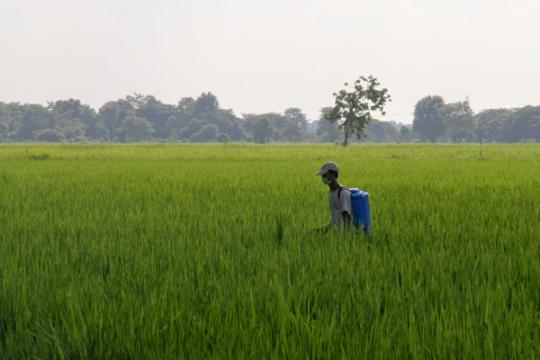
There are many kinds of rice and one of the most popular varieties in Myanmar is called Emata. This word literally means that it’s so delicious that a visitor is still sitting and eating. Emata lives up to its name- people in Myanmar love it for its long grain, fluffy and slightly sticky texture after cooking. This rice variety is also one of their main exports.
People find it troubling that the price of Emata has risen by more than 40% over the last five years. The price of rice has also been fluctuating sharper than in neighboring Thailand, Vietnam or Cambodia. Since Myanmar’s domestic rice market is weakly integrated into global markets, domestic factors are the primary reason behind high price fluctuations.
In a new report (full disclosure: I'm part of the team who authored it), the World Bank said that the high concentration of paddy production, squeezed into just two to three months of the year, is the main driver of rice price volatility. Due to limited irrigation, more than 80% of rice is produced during the monsoon season.
Prices usually drop after the harvest. Farmers and millers don’t have proper warehouses to store paddy until the price is better for selling.
Those hit hardest by unpredictable changes in rice prices are 50% of the people whose livelihoods are dependent on rice production. Spending more than half of their income on rice and other food alone, a temporary 20% increase in rice prices would lead to a 10% decline in their effective income. This is a large shock and it eats away their budget for other needs like health and education. This is why price volatility greatly matters for poverty reduction in Myanmar.
In order to reduce price volatility, some of the policies being considered in Myanmar are export restrictions, minimum farm prices, and government-owned stocks. International experience shows that these measures may sometimes help in the short term but are detrimental in the long term. Such policies also tend to put an upward pressure on prices and worsen the country’s export competitiveness in the long run.
There is a significant trade-off between lowering price volatility with short-term price measures and maintaining price competiveness. Stable prices by themselves do not generate long-term agricultural growth if achieved through harmful and shortsighted policies. How stable prices are accomplished is what matters the most.
Effective price stabilizing takes time, resources, and commitment in Myanmar. There are no shortcuts. Long-term structural issues can be only solved through investments in agriculture and infrastructure, an improved investment climate, and social safety nets.


Join the Conversation